NTFS stands for ‘New Technology File System. ‘ This file system is used in the latest Windows system, where files are shared and accessed easily. This also offers many advanced features concerning performance, auditing, compression, security, reliability, and many more. But sometimes, you may lose these files due to various unwanted scenarios: OS reinstallation, human error, bad sectors, etc. In this blog, you will learn how to perform NTFS file recovery.
To recover NTFS files, we recommend this tool:
This software will restore data from corrupted, formatted, encrypted storage media and works in all data loss situations. Now recover your lost and deleted data in 3 easy steps:
- Try this Data Recovery Tool rated Excellent on Pcmag.com.
- Select the storage media from which you want to restore the media files & click Scan.
- Preview the recoverable files, select the items you want to recover and click Recover to save the files at desired location.
What Causes NTFS Video File Deletion?
A wide variety of reasons can lead to NTFS file deletion:
- Unintentional File Deletion – You may mistakenly erase important .ntfs files.
- File System Corruption – Power failures or malware attacks can damage NTFS structures.
- Formatting Errors – Formatting a hard disk without backup causes data loss.
- Hardware Failures – A failing hard drive may lead to inaccessible data.
How To Recover NTFS Deleted Files?
As I have already mentioned, using NTFS File Recovery Tool, you will be easily able to restore NTFS deleted files. This is a professional utility that is designed to recover NTFS files with ease.
With the help of this tool, you will be able to restore deleted, erased, missing, and lost video file formats as well as image and audio file formats from external hard drives or other storage media.
I am saying this because this tool allows you to:
- Get Back deleted MPEG, MOV, AVI, ASF, movie files
- Recover deleted MP3, Real Audio, MIDI, Wave, Fruity Loops, CakeWalk Pro, Logic Audio, and Audio Interchange sound files.
- See a preview of the recovered video and other files before recovery
- Completely trustworthy
- 100% Safe & Secure to use
- User-friendly interface
emid emid
emid
* Free version of the program only scans and previews recoverable items.
If you are willing to recover deleted NTFS videos, then you can download this tool for your Windows and Mac OS as per your niche.
Here are the steps to use this tool:
Step 1: Select Desired Location
Firstly, select the drive, external media or volume from which you want to recover deleted media files. After selecting, click on 'Scan'.
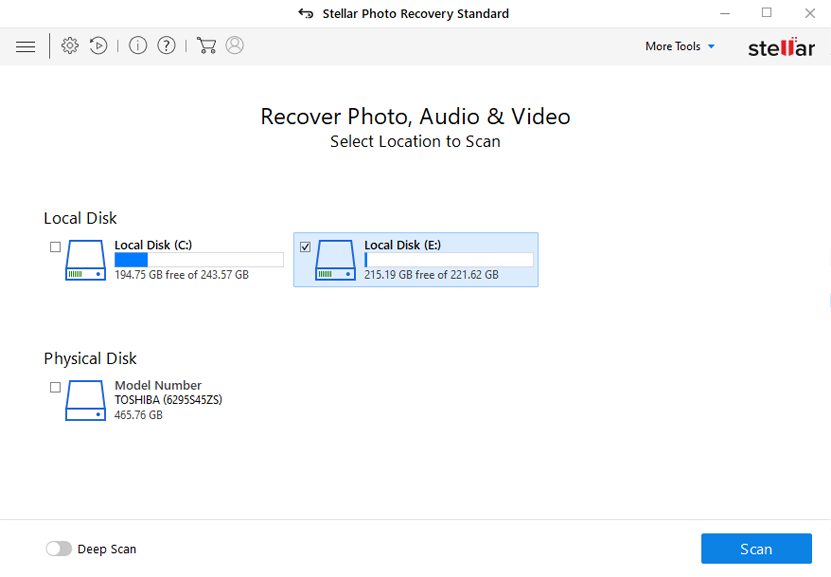
Step 2: Preview Recovered Media Files
Next, you can preview the recoverable media files after the scanning process is completed.
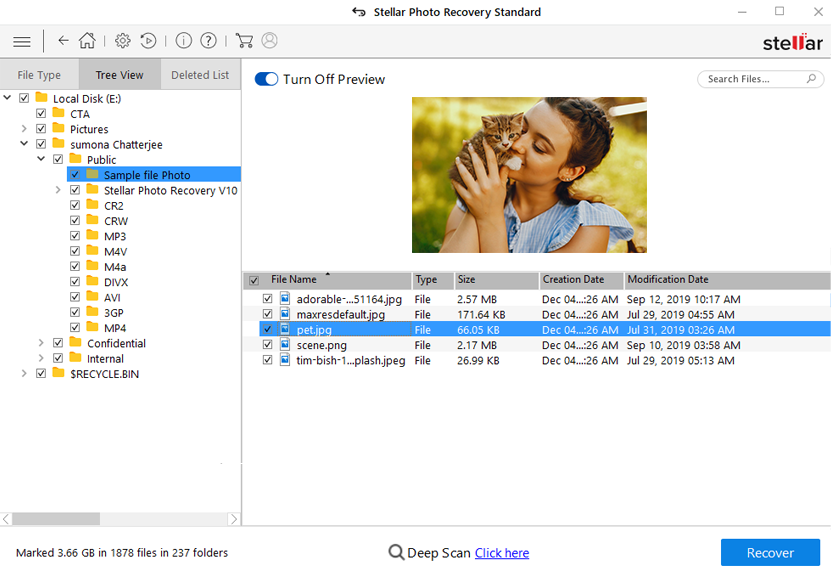
Step 3: Recover Media Files
Lastly, you can select the images, audio, video files you want to restore and click on 'Recover' option to save them at the location you want.
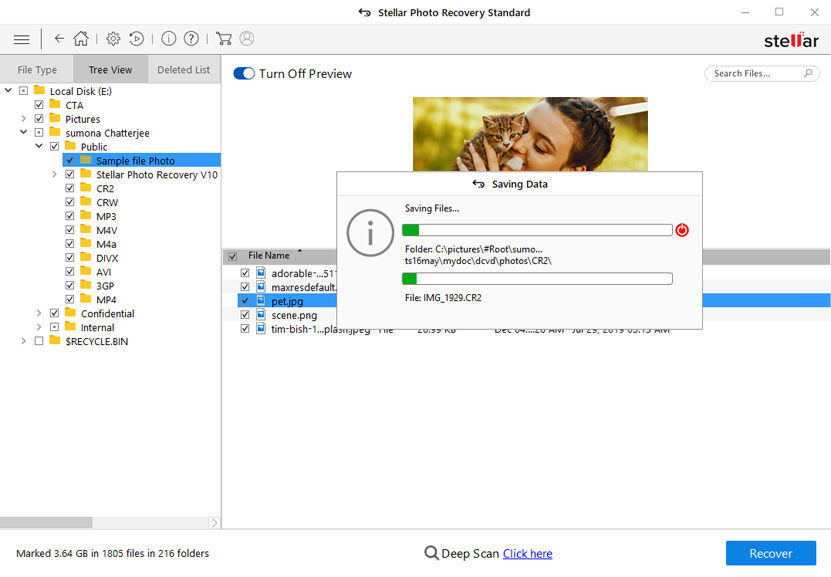
Other Solutions To Perform NTFS File Recovery
Option #1: Recovery With Backup
Many of you format their NTFS drive to fix virus infection, format error, etc. If the process is conducted without keeping proper backup of required files, then this will cause complete data loss along with video files from NTFS partition. So, it’s always recommended to do such things after keeping a complete backup.
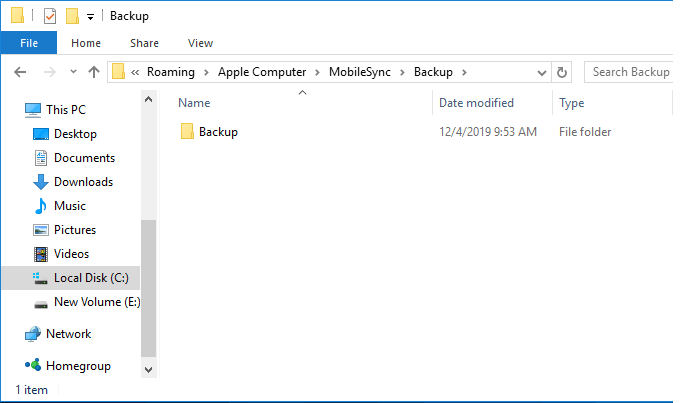
So, if you have the backup, then you need not face any trouble; just restore your lost video file from your backup.
Option #2: Use the Windows Built-in Tools
As we all know, Windows offers various recovery options that may help retrieve lost files. Here they are:
- Check the Recycle Bin – Deleted files often remain in the Recycle Bin. You can check this by navigating to Recycle Bin icon on the desktop and opening it to look for the deleted file >> find it and tap Restore.
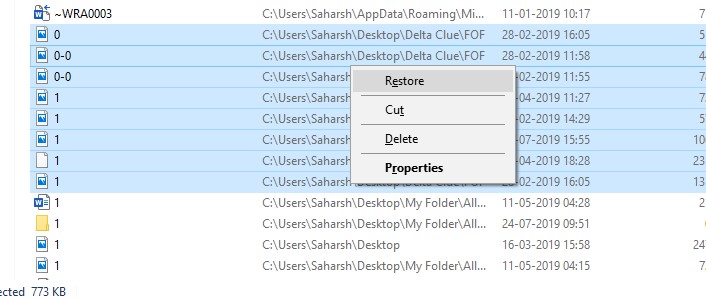
- Restore Previous Versions – Right-click on the folder and select “Restore Previous Versions.”

Option #3: External Drive Format or Deleted File Recovery Attention:
When you format an external hard disk or delete files from the external disk, then the files will get erased from the partition table and external disk space will become available. To recover the entire lost file during formatting or deleting, it is strongly recommended you not to write new data to the external hard disk where data got lost.
Tips To Prevent NTFS File Deletion
One silly mistake or small carelessness is enough to erase all the memorable and exciting moments of the past. While most of the problems related to NTFS Video File Recovery have solutions, it is always better to confront it by taking some measures. Users are advised to take care of the following points mentioned here if they want to avoid the horrible situation of NTFS video files being lost in the future.
- Never use any digital device when its battery is low.
- Always make a backup of all your important files or folders so that it can help you in the future when any data loss situation happens.
- Use a reliable power source that can help your system from sudden shutdown
- Before formatting, check your storage device at least two to three times.
- Don’t remove the files when the file transfer process is in progress
- Before removing the device from the computer or from any other system, eject it properly
- Avoid using the same device when it is already used and full. Keep it in a safe place and do not save any new media files; otherwise, the previous data will be overwritten.
Related FAQs:
Is NTFS Undelete Free?
Yes, it is free, when you use the File Recovery Software mentioned in this blog.
Can Permanently Deleted NTFS Files Be Recovered?
No, permanently deleted NTFS or other files cannot be recovered without backup.
What Happens When a File Is Deleted In NTFS?
When a file is deleted in NTFS, then MFT entries are updated and objects are modified or deleted.
Conclusion
Well, I have shortlisted the best possible solutions to retrieve deleted NTFS video files. Hopefully, these solutions will sort out your issue and help in the easy recovery of your precious video files.
So, do not hesitate to try the NTFS File Recovery Tool to restore deleted NTFS files in easy steps. Also, you can try to prevent the deletion of NTFS files by following the tips I have mentioned in the above section.
Hope you found this blog helpful.
If you have found this post helpful and useful, then please do not forget to share it.
Also like and follow us on Facebook, Twitter, and Pinterest to get the latest updates.

Taposhi is an expert technical writer with 5+ years of experience. Her in-depth knowledge about data recovery and fascination to explore new DIY tools & technologies have helped many. She has a great interest in photography and loves to share photography tips and tricks with others.